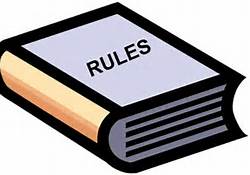
E-mail rules allow messages to be automatically sorted, formatted, categorized, etc. There are two types of rules when using Microsoft Outlook:
• Server-based rules: These rules run on your mailbox on the Exchange mail server, even when Outlook is not running on your computer. Server-based rules must apply to messages when they are first delivered to your Inbox, and the rules must be able to run until they are completed on the server. For example, a rule that specifies that a message be printed cannot run until it is completed on the server. If a rule cannot be applied on the server, it is applied when you start Outlook and becomes a client-only rule.
• Client-only rules: Client-only rules are rules that run only on your computer. These are rules that cannot run until they are completed on the server, such as specifying to print certain messages. Client-only rules can only run when Outlook is running.
If your list of rules contains both kinds of rules, the server-based rules are applied first, followed by the client-only rules.
It is possible to design custom rules with specific actions and features.
1. Click the "File" tab and choose "Manage Rules & Alerts."
2. In the "Rules and Alerts" dialog box, on the "Email Rules" tab, click "New Rule."
3. Under "Start from a blank rule," click either "Check messages when they arrive" or "Check messages after sending."
4. Click "Next."
5. Under "Step 1: Select condition(s)," select the conditions that you want the messages to meet for the rule to apply.
6. Under "Step 2: Edit the rule description," click an underlined value for any condition that you added, and then specify the value.
7. Click "Next."
8. Under "Step 1: Select action(s)," select the action that you want the rule to take when the specified conditions are met.
9. Under "Step 2: Edit the rule description," click an underlined value for any action that you added, and then specify the value.
10. Click "Next."
11. Under "Step 1: Select exception(s)," select any exceptions to the rule.
12. Under "Step 2: Edit the rule description," click an underlined value for any exception that you added, and then specify the value.
13. Click "Next."
14. Under "Step 1: Specify a name for this rule," enter a name.
15. Under "Step 2: Setup rule options," select the check boxes for the options that you want.
• If you want to run this rule on messages that already are in the Inbox, select the Run this rule now on messages already in "Inbox" check box.
• By default, the new rule is turned on. To turn off the rule, clear the Turn on this rule check box.
• To apply this rule to all email accounts set up in Outlook, select the Create this rule on all accounts check box.
16. Click "Finish."
These instructions can also be found on SharePoint in the Software Users Group > Shared Documents > Outlook-Office 365 > E-mail Rules.docx.